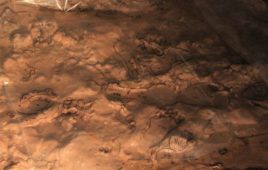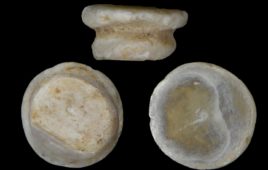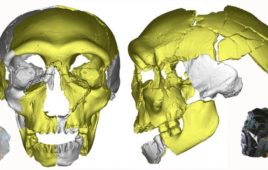Despite disappearing more than 30,000 years ago, traces of Neanderthals are still prevalent in the form of DNA sequences scattered through the modern human genome.
A study led by geneticists at the University of California, Davis shows that traces of our closest relatives are slowly being removed by natural selection and today Neanderthal genes are only a few percent of the genome of people of European ancestry, a little more common in people of East Asian descent and almost absent in people of African ancestry.
“On average, there has been weak but widespread selection against Neanderthal genes,” Graham Coop, professor in the UC Davis Department of Evolution and Ecology and Center for Population Biology, said in a statement.
Coop along with postdoctoral researchers Ivan Juric and Simon Aeschbacher measured the degree of natural selection acting on Neanderthal DNA in the human genome.
The selection is a consequence of a small population of Neanderthals mixing with a much larger population of modern humans.
DNA samples retrieved from a number of data has helped identify the Neanderthal genome among ours.
Neanderthals lived in Central Asia and Europe up until a few thousand years ago after splitting from African ancestors more than 500,000 years ago.
Modern humans left Africa between 50,000 and 80,000 years ago and spread throughout Europe and Asia, while interbreeding with Neanderthals. The first hybrid offspring would have been on average a 50/50 mix of both modern human and Neanderthal genes.
A popular theory is that Neanderthals quickly became genetically incompatible with modern humans, meaning their hybrid offspring were not “fit” in evolutionary terms and either failed to thrive or were not fertile.
Researchers found that rather than showing strong selection against a few Neanderthal genes, they found weak, but widespread selection against many Neanderthal DNA sequences that is slowly removing them from our genome.
According to Coop, that’s consistent with a small, isolated population of Neanderthals mixing with a much larger population of modern humans.
Because they inbred in small populations, genetic variants can remain common even if they’re harmful to some degree. However, when they mix into a larger population, natural selection starts to act against those variants and weed them out.
“The human population size has historically been much larger, and this is important since selection is more efficient at removing deleterious variants in large populations,” Juric said. “Weakly deleterious variants that could persist in Neanderthals could not persist in humans. We think that this simple explanation can account for the pattern of Neanderthal ancestry that we see today along the genome of modern humans.”
The study was published in PLOS Genetics on Nov. 8.




